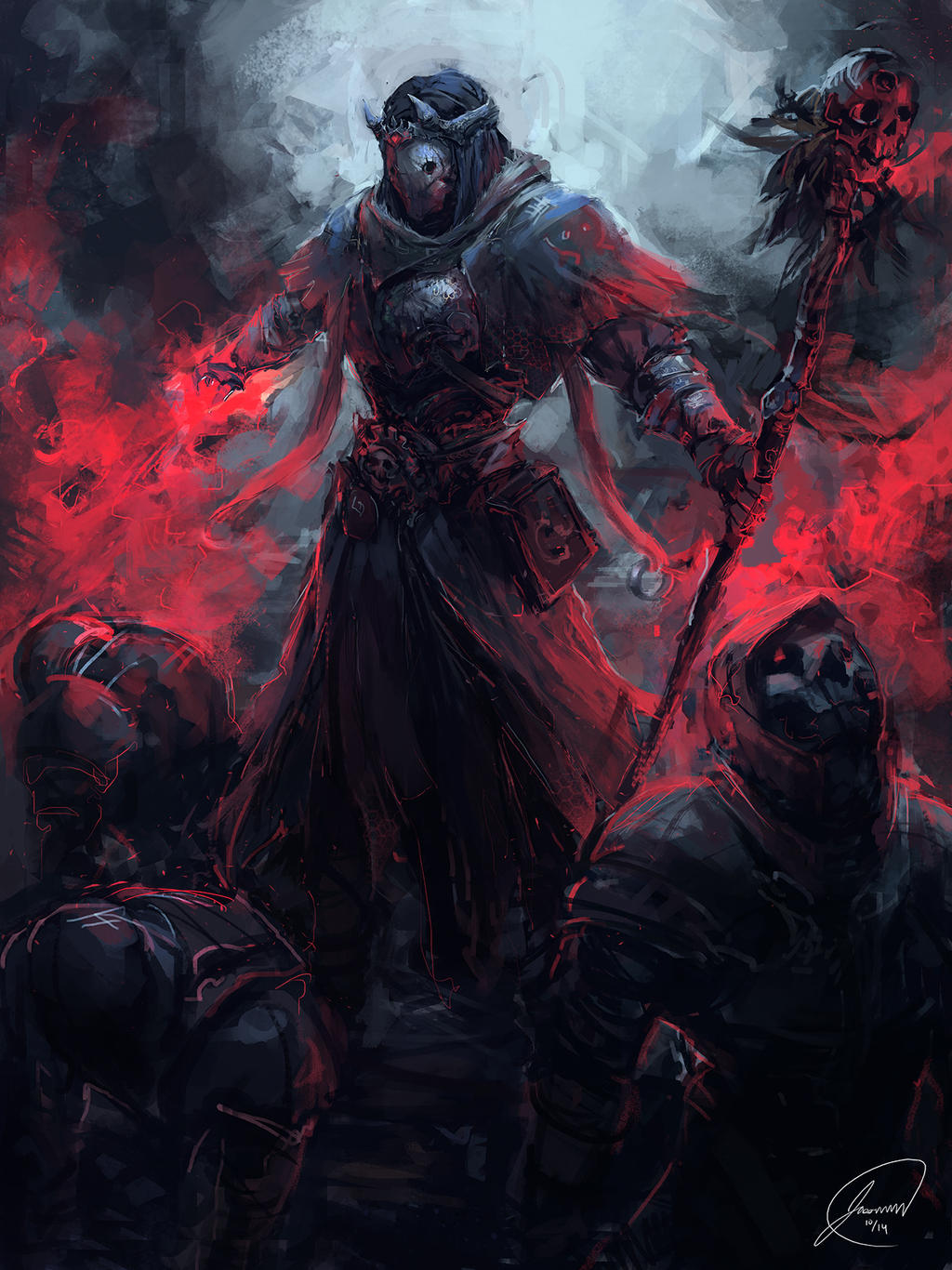




Necromancer
The robe-clad tiefling grins behind her mask before muttering a phrase in an exotic tongue. Moments later, the corpses in front of her begin to shudder and twitch, slowly clambering to their feet and lazily turning towards the now-terrified soldier at the end of the hallway. With a snap of her fingers, they begin jauntily trudging towards their cornered victim, who shakily points his sword towards them in a futile attempt to save himself from the undead assailants.
The half-elf raises the effigy high above his head, and begins a loud and rhythmic chant, as the faint sound of drums echo from nowhere around the foggy graveyard. Locking eyes with his target, he laughs as he drives a long, silver needle through the body of the effigy, and a second later the theif cries out in agony and drops to the floor, his screams filling the midnight air as the half-elf slowly approaches.
A weathered, silver dragonborn strides towards the gang of bandits with intent, raising both hands as pale flames coil and swirl around his fingers. A large, ornate longsword floats alongside him. As the first bandit marches over to meet him, the sword flies forward and drives itself through his chest, pinning him to the floor. The dragonborn relishes in their screams as the unearthly flames whip forward and sear the group with necrotic energy.
Necromancers are powerful spellcasters with a close association and affinity for the cycle of death. The specific source of their power is largely unknown, but their particular aptitude with spells from the school of necromancy leads many to believe that their power comes from another plane of existence.
Dealers in Death
Some wizards might be adept in spells from the school of necromancy, but they are only scratching the surface of this ancient arcane art. A true necromancer can tap into the very energies of the other side and wield its wierd and deathly magics. Though they all draw their power from the same source, there are a number of different ways in which a necromancer may wield their magic, from the traditional form of raising dead, to the more exotic art of voodoo.
More than a Summoner
By definition, a necromacer is a mage that raises the dead, though only a fool would assume that this is all they are capable of. Necromancers wield an arsenal of spells that can bring down a wide variety of foes, and have a plethora of unique abilities that make them harder to put down and keep down than other adversaries on the battlefield. A necromancer's life will be deeply intertwined with death, though there are many ways in which they can bring it to their enemies.



The Necromancer
| Level | Proficiency Bonus | Features | Cantrips Known | 1st | 2nd | 3rd | 4th | 5th | 6th | 7th | 8th | 9th |
|---|---|---|---|---|---|---|---|---|---|---|---|---|
| 1st | +2 | Spellcasting, Power Beyond | 3 | 2 | — | — | — | — | — | — | — | — |
| 2nd | +2 | Necromantic Custom | 3 | 3 | — | — | — | — | — | — | — | — |
| 3rd | +2 | Graven Winds | 3 | 4 | 2 | — | — | — | — | — | — | — |
| 4th | +2 | Ability Score Improvement | 4 | 4 | 3 | — | — | — | — | — | — | — |
| 5th | +3 | Friend of the Dead | 4 | 4 | 3 | 2 | — | — | — | — | — | — |
| 6th | +3 | Necromantic Custom Feature | 4 | 4 | 3 | 3 | — | — | — | — | — | — |
| 7th | +3 | Reaper's Boon | 4 | 4 | 3 | 3 | 1 | — | — | — | — | — |
| 8th | +3 | Ability Score Improvement | 4 | 4 | 3 | 3 | 2 | — | — | — | — | — |
| 9th | +4 | Nothing to Fear | 4 | 4 | 3 | 3 | 3 | 1 | — | — | — | — |
| 10th | +4 | Necromantic Custom Feature | 5 | 4 | 3 | 3 | 3 | 2 | — | — | — | — |
| 11th | +4 | ─ | 5 | 4 | 3 | 3 | 3 | 2 | 1 | — | — | — |
| 12th | +4 | Ability Score Improvement | 5 | 4 | 3 | 3 | 3 | 2 | 1 | — | — | — |
| 13th | +5 | Reaper's Boon | 5 | 4 | 3 | 3 | 3 | 2 | 1 | 1 | — | — |
| 14th | +5 | Ability Score Improvement, Necromantic Custom Feature | 5 | 4 | 3 | 3 | 3 | 2 | 1 | 1 | — | — |
| 15th | +5 | ─ | 5 | 4 | 3 | 3 | 3 | 2 | 1 | 1 | 1 | — |
| 16th | +5 | Ability Score Improvement | 5 | 4 | 3 | 3 | 3 | 2 | 1 | 1 | 1 | — |
| 17th | +6 | Reaper's Boon | 5 | 4 | 3 | 3 | 3 | 2 | 1 | 1 | 1 | 1 |
| 18th | +6 | A Soul for a Soul | 5 | 4 | 3 | 3 | 3 | 3 | 1 | 1 | 1 | 1 |
| 19th | +6 | Ability Score Improvement | 5 | 4 | 3 | 3 | 3 | 3 | 2 | 1 | 1 | 1 |
| 20th | +6 | Avoid Death | 5 | 4 | 3 | 3 | 3 | 3 | 2 | 2 | 1 | 1 |
Creating a Necromancer
As you create your necromancer character, consider why you practice necromancy.
Do you desire ultimate power, toppling kingdoms with an army of the dead? Would you prefer to be more discreet, working as an untraceable hired killer? Or perhaps you see your powers as more of a calling, trying to fulfil some grand prophecy or great destiny?
What drove you towards a life of adventure? Do you wish to recruit your fellow companions for your master plan? Perhaps you seek to learn from others, uncovering all sorts of forgotten knowledge and magic. Maybe your abilities simply make you an adept adventurer, and using your powers is simply a means to acquire wealth and fame?
Quick Build
You can make a necromancer quickly by following these suggestions. First, make Charisma your highest ability score, followed by Constitution or Dexterity. Second, choose the charlatan background. Third, choose the agony, thaumaturgy and spare the dying cantrips.
Class Features
As a necromancer, you gain the following class features.
Hit Points
- Hit Dice: 1d6 per necromancer level
- Hit Points at 1st Level: 6 + your Constitution modifier
- Hit Points at Higher Levels: 1d6 (or 4) + your Constitution modifier per necromancer level after 1st
Proficiencies
- Armor: None
- Weapons: Simple weapons
- Tools: None
- Saving Throws: Charisma, Wisdom
- Skills: Choose any two from Arcana, Deception, History, Investigation, Medicine, Perception, Performance, Persuasion and Religion
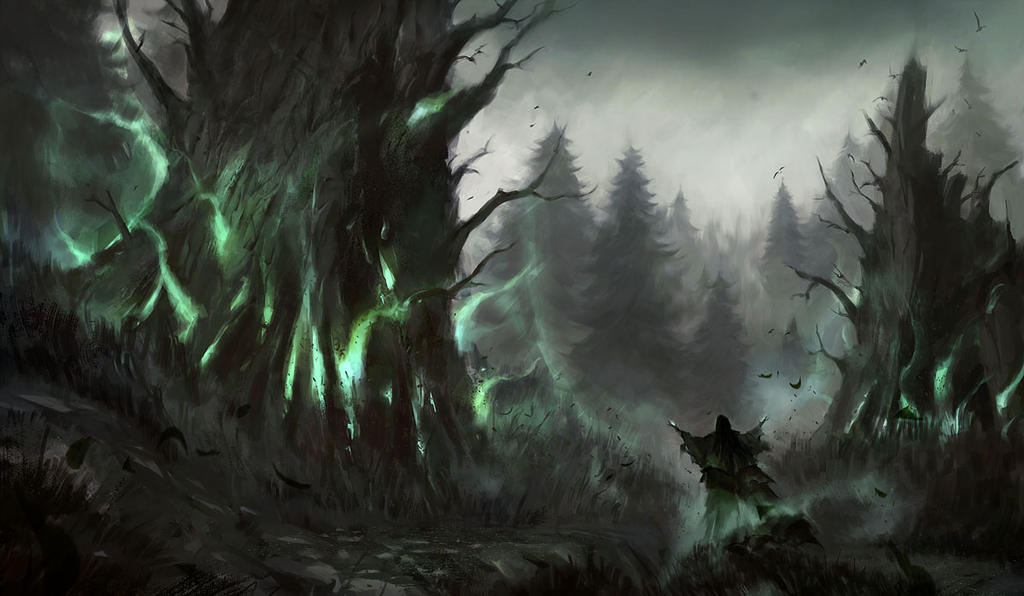

Equipment
You start with the following equipment, in addition to the equipment granted by your background:
- (a) a simple melee weapon or (b) a light crossbow and 20 bolts
- (a) a component pouch or (b) an arcane focus
- (a) a dungeoneer's pack or (b) an explorer's pack
Spellcasting
As a delver into the esoteric arts of necromancy, you gain a number of spells from the necromancer spell list, though the source of your power is unknown. Necromancers do not question the origin of their power, they simply know that they have an aptitude for magic, particularly that which relates to the cycle of death.
Cantrips
At 1st level, you know three cantrips of your choice from the necromancer spell list. You learn additional necromancer cantrips of your choice at higher levels, as shown in the Cantrips Known column of the necromancer table.
Preparing and Casting Spells
The Necromancer table shows you how many spell slots you have of 1st level and higher. To cast one of these spells, you must expend a slot of the spell’s level or higher. You regain all expended spell slots when you finish a long rest.
You prepare the list of necromancer spells that are available for you to cast. To do so, choose a number of necromancer spells from the necromancer spell list equal to your Charisma modifier + your necromancer level (minimum of one spell). The spells must be of a level for which you have spell slots.
For example, if you’re a 3rd-level necromancer, you have four 1st-level and two 2nd-level spell slots. With a Charisma of 16, your list of prepared spells can include six spells of 1st or 2nd level, in any combination, chosen from the spell list. If you prepare the 1st-level spell ghostly fire, you can cast it using a 1st-level or a 2nd-level slot. Casting the spell doesn’t remove it from your list of prepared spells.
Necromantic Aptitude
At first level, you know two 1st level spells from the necromancer spell list. When you level up, you will sometimes learn an additional spell, as shown by the necromancer table. You cannot know more spells than is shown in the necromancer table, but each time you level up you can choose to change which spells you know for other spells on the necromancer spell list.
Spellcasting Ability
Charisma is your spellcasting ability for your necromancer spells, since your necromantic power comes from your ability to command the ethereal, inscrutable forces of death to do your bidding. You use your Charisma whenever a spell refers to your spellcasting ability. In addition, you use your Charisma modifier when setting the saving throw DC for a necromancer spell you cast and when making an attack roll with one.
Spell save DC: 8 + your proficiency bonus + your Charisma modifier
Spell attack modifier: your proficiency bonus + your Charisma modifier
Ritual Casting
You can cast a spell from the necromancer spell list as a ritual if that spell has the ritual tag, though you do not need to know the spell, so long as you have some form of scroll or spellbook containing the spell.
Spellcasting Focus
You can use an arcane focus (see the Adventuring Gear section) or even a marking such as a tattoo or scar as a spellcasting focus for your necromancer spells, though this still requires a free hand to make the somatic components.
Power Beyond
A necromancer can push their arcane power to the limits in order to regain spell slots, though doing so will have consequences. Starting at 1st level, as a bonus action, you can regain one spell slot, up to a level equal to half your Charisma modifier, rounded up (minimum 1st). For example, if you have a Charisma bonus of +3, you can regain up to a 2nd level spell slot. When you do so, you must roll a d6 and take the effect listed on the table below.
| d6 | Effect |
|---|---|
| 1 | You become unable to speak for 1 minute. |
| 2 | You become blinded until the start of your next turn. |
| 3 | Your movement speed is reduced to 5 feet until the end of your next turn. |
| 4 | A random item in your possession that you are not holding is picked up and thrown 60 feet in a random direction. |
| 5 | A corpse within 30 feet of you starts frantically speaking, screaming or otherwise vocalizing until the end of your next turn. |
| 6 | A corpse within 30 feet of you is reanimated into a zombie or skeleton, and is hostile to all creatures. |
Necromantic Custom
A necromantic custom is a necromancer's specific approach to the art of necromancy. Starting at 2nd level, you may pick one necromantic custom. Your choice grants you bonuses at 2nd, 6th, 10th and 14th levels. There are three customs to choose from, which are detailed at the end of this class description.
Undead Tongue
One of the first skills a necromancer learns is coaxing information from beyond the mortal realm. At 2nd level, you can cast speak with dead at will, without expending a spell slot or material components. Additionally, you have an advantage to any charisma rolls made to avoid being prosecuted for practicing necromancy, which is often seen as taboo by many cultures.
Graven Winds
Starting at 3rd level, whenever you reduce a creature to 0 hit points on your turn, a macabre gust blows over your surviving foes, as an omen of death's cold embrace. Any hostile creatures in a 30 foot cube, originating around the fallen enemy, must make a wisdom saving throw against your spell save DC or become frightened until the end of their next turn. Creatures that are already frightened take 1d4 cold damage. This damage increases to 1d8 at 11th level.
Friend of the Dead
At 5th level, your energy is aligned with those of the forces of death. You gain resistance to necrotic damage, and undead creatures with a CR of 1 or lower will not attack you unless you attack them first, or if they have been commanded to do so.
Reaper's Boon
It is not just your necromantic custom that provides you with unique bonuses. At 7th level, you gain access to a selection of perks known as reaper's boons. At 7th level, you may only have 1, though you may choose an additional boon when you reach 13th level, and again at 17th level. The effect of the boons you choose are permanent, and to change your choice you must perform a 1-hour ritual with the corpse of a creature with a challenge rating no lower than 5. The reaper's boons are listed below.
All-Seeing
You can see normally in non-magical darkness to a distance of 120 feet, and in magical darkness to a distance of 60 feet.
Battle Ready
You gain proficiency in light and medium armour, as well as one martial weapon of your choice.
Familiarity
Any time a creature makes a ranged spell attack against you with a necromancy spell, it rolls with disadvantage. If the spell requires a saving throw, you make that saving throw with advantage.
March of the Dead
Any undead under your control gain an additional 10 foot of movement.
Minimal Power
When you cast a 1st or 2nd level spell that deals damage, you do not expend a spell slot if all the damage dice rolled a 1 or a 2. This effect does not count if the spell was cast at a higher slot level than 2.
Pack Leader
If you have at least two undead under your control, you gain a bonus to any intimidation rolls, equal to the amount of undead under your control.
Searing Pain
Any time you hit a target at full health with the agony cantrip, they must make a second wisdom saving throw. If they fail a second time, they spend their next turn reeling in pain and cannot move or take any actions.
Nothing to Fear
Long have you gazed into the abyss, it now holds few secrets from you. Starting at 9th level, you are immune to being frightened, and all intimidation rolls made against you are made with disadvantage. An intimidation attempt from any creature with a lower charisma score than yours automatically fails.
A Soul for a Soul
At 18th level, you can make a bargain with death itself, trading the life of one for the life of another. Any time you kill a creature with a challenge rating of 3 or higher within 60 feet of an ally that is making death saving throws, the ally becomes stable at 0 hit points. If the slain creature has a challenge rating of 5 or higher, they become stable and regain hit points equal to twice your Charisma modifier (minimum 1). If there are multiple allies making death saving throws within range, you choose which one is stabilised.
Avoid Death
At 20th level, the very hands of death struggle to grasp you. You have an advantage on all constitution and death saving throws. Additionally, a death saving throw of 19 or 20 counts as two successful saves.


Necromantic Customs
Necromancy is an art almost as old as magic itself, and as such, a number of different approaches to this practice have emerged over time, known as Necromantic Customs. Some necromancers use their powers to raise the dead to serve them, while others place powerful hexes on their foes.
Corpsewaker
The corpsewaker will usually fit the more stereotypic view of necromancy; invoking the dead to rise from their eternal slumber, and commanding them to fight as thralls. Though all necromancers can raise the dead to some degree, those raised by corpsewakers are considerably more powerful, and have a number of other benefits and abilities.
Partial Reanimation
Starting at 2nd level, you have can reanimate certain parts of a corpse, which is much easier than fully reanimating a creature, but the thrall it creates is not as powerful. As an action, you can partially reanimate the corpse of a beast or humanoid you can see within 60 feet, which restores function to its head and one or two of its limbs. This ability does not work on creatures with a challenge rating higher than 4. In this state, the corpse will attack the nearest hostile creature. Its movement speed and hit point maximum are halved, and it's AC cannot exceed 10. The corpse will attempt to move towards the nearest hostile creature and make a melee attack, which deals 1d6 + your Charisma modifier in bludgeoning, slashing or piercing damage. The corpse takes its turn immediately after yours, and collapses and dies after it makes its attack or uses all of its movement and does not reach a target. You cannot reanimate the same corpse twice in this way. You can do perform this action a number of times equal to your Charisma modifier + your proficiency bonus (minimum 1) every long rest.
Cadaverous Companion
At 6th level, the animate dead spell is added to your list of known spells, and does not count towards the total number of spells you can learn. You can cast an advanced version of the animate dead spell to create a permanent undead minion to do your bidding. To do this, you must perform a 1 hour ritual on the corpse of a humanoid or beast with a CR no higher than 2, to raise it under your command as a cadaverous companion.
It has the same health and ability scores and armour class as it did before it died, but its movement speed is lowered by 5 foot and it cannot speak, though it can understand all languages it knew when it was alive. It cannot use weapons properly, and so instead makes an unarmed attack that deals 1d6 + its Strength modifier in bludgeoning, slashing or piercing damage depending on how it attacks. When it makes a melee attack, it deals additional necrotic damage equal to your Charisma modifier. At 6th level, you can only have one cadaverous companion active at a time, though you can raise an additional one at 10th level and again at 14th level.
Horde
At 10th level, when at least 3 undead creatures under your command are engaged with the same target, they add your Charisma bonus to their attack rolls. Partially reanimated undead count towards this total, but do not receive the bonus to their attack rolls. Additionally, whenever an undead creature under the effects of horde kills a beast or humanoid, it will be partially reanimated. This does not count towards your total number of uses of the partially reanimate ability.
Vile Combustion
At 14th level, you can overload one of your cadaverous companions with deathly magic, causing them to erupt in a violent explosion of necrotic energy. As an action, you can cause one of your cadaverous companions, to which you have a direct line of sight, to explode with magic in a 15 foot sphere. Any creatures caught within range must make a constitution saving throw against your spell save DC, taking 4d12 necrotic damage on a failed save or half as much on a successful one. Any undead creatures controlled by you caught within the blast have 1d8 hit points restored. This ability only works if the target companion has at least half their total hit points remaining and are not incapacitated.


Voodoo
Voodoo is an exotic necromantic art that is devoted to the torment and torture of specific individuals, which is done by manipulating an effigy. Voodoo necromancers specialise in dealing high amounts of damage to single targets, through the use of voodoo hexes; powerful, spell-like abilities unique to voodoo necromancers.
Malicious Focus
Starting at 2nd level, the voodoo binding cantrip is added to your spell list, and does not count towards the total number of cantrips you can know. To cast this cantrip, you need an effigy that corresponds to the target's creature type (e.g. beast or humanoid). You can create an effigy out of simple materials such as cloth, clay or straw, but you must have seen a creature of any given type to make an effigy for it. You have an advantage to any spell attack rolls made against a bound creature, and you add your Charisma modifier to the damage roll of any melee attacks you make against a bound creature.
Voodoo Binding
Necromancy cantrip
- Casting Time: 1 action
- Range: 60 feet
- Components: V, S, C (An effigy that matches the target's creature type)
- Duration: Instantaneous (Varies)
You whisper to the effigy while looking at a target you can see within range, which binds the spirit of the target to the effigy, allowing you to cast voodoo hexes upon it. The binding lasts for a number of turns equal to your Charisma modifier (minimum 1), after which you will need to cast the spell again to re-bind them. After the first turn of being bound, the target can attempt a Charisma saving throw against your spell save DC to halve the duration of the binding (rounded up). They can only attempt this once per cast. You can only have one active binding at a time; casting the spell on a second target will remove it from the first target.
At higher levels: The spell can be cast as a bonus action when you reach 10th level.
Crush
Simple in principle, but lethal nonetheless, the first hex you have learnt can prove fatal to lesser foes. At 6th level, you can squeeze an effigy in your hand and the bound target must make a Constitution saving throw, taking 3d10 force damage on a failed save or half as much on a successful one. You can perform this hex a number of times equal to your Charisma modifier (minimum 1) every long rest.
Impale
At 10th level, you can impale an effigy with a sharp object, which deals 4d12 piercing damage to the bound target. If the target is above 0 hit points and the impaling object is removed, the damage dealt by this hex is removed, and re-inserting the impaling object has no effect. Similarly, if the binding ends and the target is above 0 hit points, the target regains hit points equal to half of the damage dealt by this hex. You can perform this hex a number of times equal to half your Charisma modifier, rounded up (minimum 1) every long rest.
Drown
At 14th level, you have learned one of the most lethal voodoo practices that is sure to defeat all but the toughest of foes. As an action, you can submerge an effigy in liquid, and the bound target becomes unable to breathe for as long as they are bound. If the hex reduces the target to 0 hit points, they must begin making death saving throws. If the hex did not reduce the target to 0 hit points, the target instead takes one level of exhaustion for every turn spent unable to breathe, up to a maximum of 5. You can perform this hex once every long rest. Creatures that can breathe water or do not need to breathe are unaffected by this hex.
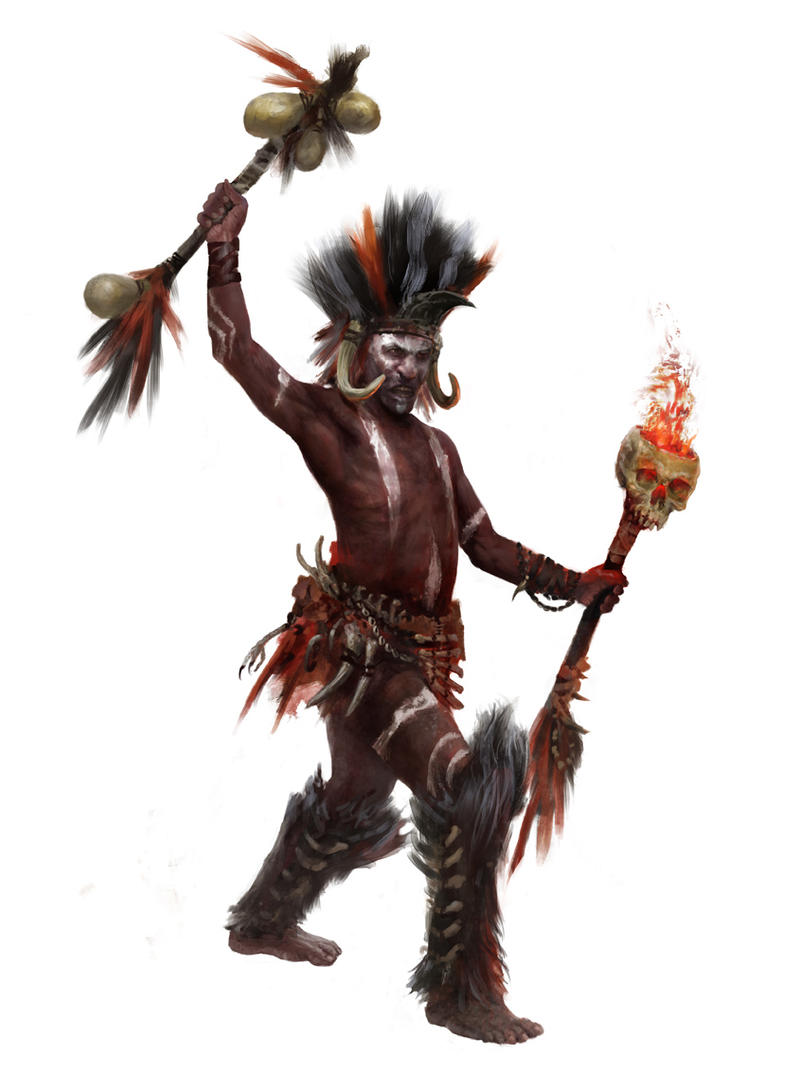
Wraithcaller
The Wraithcaller custom denotes a necromancer with an aptitude for summoning spirits and utilising the souls and lifeforces of the dead, and using this energy for a variety of unique and powerful abilities. Wraithcallers work well with multiple battle strategies, from one-on-one dueling to crowd control.
Vengeful Spirit
Starting at 2nd level, you can tap into the lifeforce of fallen foes and unleash it as deathly energy upon other creatures. Whenever you kill a creature, you can choose to absorb some of it's lifeforce into your arcane focus. You can then unleash this power when you cast a damage dealing spell up to 3 turns later. At 2nd level, this effect deals an extra 1d8 necrotic damage in addition to the normal damage of the spell. This damage increases to 1d10 at 10th level and 1d12 at 18th level. The vengeful spirit still strikes even if the spell misses, and if you do not unleash it within 3 turns, its power fades and can no longer be unleashed. At 2nd level, you can only store one lifeforce at a time, though this increases to two at 8th level, three at 16th level and four at 20th level.
Haunted Weapon
Starting at 6th level, you can perform a 1 hour ritual to imbue a weapon with a slain creatures lifeforce, after which it will attack creatures on your command. The ritual requires the corpse of a creature with a challenge rating no lower than 2, a non-magical weapon and ritual supplies such as candles, chalk and incense worth 100 gold pieces, which are all consumed by the ritual. Once the ritual is complete, the weapon becomes haunted and obeys your commands. As an action, you can command the haunted weapon to attack a target within 10 feet of you. Your spell casting ability modifier is added to the attack roll, and its attacks deal 1d8 + your spellcasting ability modifier in either slashing, piercing or bludgeoning damage depending on the weapon used. You can only have one haunted weapon at a time, and creating another one will remove the spirit from your current haunted weapon.
Spook
At 10th level, you can summon terrifying phantoms to strike fear into the hearts of your enemies. As an action, you can summon a spirit directly in front of a target you can see within 30 feet of you. The target, and up to two additional creatures that are adjacent to or occupying the same space as the target must make a wisdom saving throw against your spell save DC. Upon a failed save, the targets become frightened for 3 turns and takes 4d6 psychic damage. Upon a successful save, the targets become frightened for 2 turns and takes half as much psychic damage. You can use this ability a number of times equal to your Charisma modifier every long rest.
Spectral Dodge
At 14th level, you can channel deathly energies to protect yourself from harm for a few moments, which can be everything in the heat of battle. As a reaction, you can become a spectre for a few seconds in response to an attack, causing the attack to automatically fail. You can declare this after the attack roll is made, but before the damage is rolled. You can use this ability once every long rest.
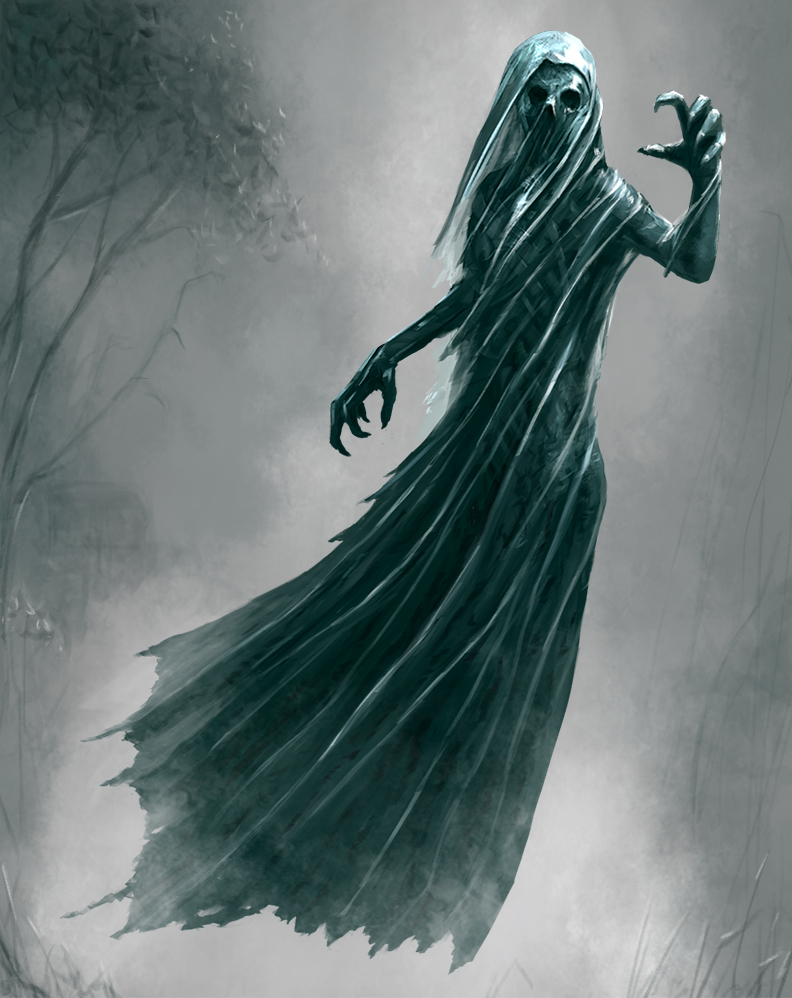


Necromancer Spell List
Cantrips (0 Level)
- Acid Splash
- Agony HB
- Chill Touch
- Magehand
- Message
- Poison Spray
- Ray of Frost
- Shocking Grasp
- Spare the Dying
- Thaumaturgy
- Toll the Dead
1st Level
- Bane
- Cause Fear
- Charm Person
- Faerie Fire
- False Life
- Floating Disk
- Fog Cloud
- Ghostly Fire HB
- Inflict Wounds
- Mage Armor
- Magic Missile
- Ray of Sickness
- Silent Image
- Sleep
- Winds of Woe HB
- Unseen Servant
2nd Level
- Acid Arrow
- Augury
- Blindness/Deafness
- Darkness
- Darkvision
- Gentle Repose
- Gust of Wind
- Knock
- Mirror Harm HB
- Misty Step
- Ray of Enfeeblement
- Silence
- Wither HB
3rd Level
- Animate Dead
- Bestow Curse
- Fear
- Feign Death
- Gaseous Form
- Lethargy HB
- Life Transferrence
- Mark of Retribution HB
- Revivify
- Slow
- Spirit Guardians
- Vampiric Touch
- Water Walk
4th Level
- Blight
- Compulsion
- Confusion
- Evard's Black Tentacles
- Phantasmal Killer
- Shadow of Moil
5th Level
- Cloudkill
- Cone of Cold
- Contagion
- Danse Macabre
- Enervation
- Negative Energy Flood
- Raise Dead
- Reincarnate
- Telekinesis
6th Level
- Circle of Death
- Create Homunculus
- Create Undead
- Eyebite
- Harm
- Magic Jar
- Mental Prison
- Soul Cage
7th Level
- Etherealness
- Finger of Death
- Project Image
- Resurrection
8th Level
- Abi-Dalzim's Horrid Wilting
- Clone
- Feeblemind
- Glibness
9th Level
- Astral Projection
- True Resurrection
- Weird
Spells with the HB tag have been homebrewed for this class, and are detailed at the end of this list.
Agony
Necromancy cantrip
- Casting Time: 1 action
- Range: 60 feet
- Components: V, S
- Duration: Instantaneous
You point at a creature you can see within range and send vile energy surging through their body. The target must succeed a Wisdom saving throw or take 1d8 psychic damage. If the target is at full health, the damage die is 1d12.
At higher levels: The spell’s damage increases by one die when you reach 5th level (2d8 or 2d12), 11th level (3d8 or 3d12), and 17th level (4d8 or 4d12).
Ghostly Fire
1st-level evocation
- Casting Time: 1 action
- Range: 15 foot (cone)
- Components: V, S, M, (a tallow candle and a stick of incense)
- Duration: Instantaneous
A pale, ethereal flame coils out from your fingertips towards nearby targets. Each living creature in a 15-foot cone must make a Dexterity saving throw. Each creature takes 2d8 nectrotic damage on a failed save, or half as much on a successful one. Each undead creature within this range is has a disadvantage to the saving throw, and takes 2d8 fire damage instead.
At higher levels: When you cast this spell using a spell slot of 2nd level or higher, the damage increases by 1d8 for each slot level above 1st. When you cast this spell using a spell slot of 5th level or higher, the size of the cone increases to 25 feet.
Winds of Woe
1st-level necromancy
- Casting Time: 1 action
- Range: 15 foot (cube)
- Components: V, S
- Duration: Instantaneous
A sudden, chilling gust picks up in a 15 foot cube in front of you. Every creature within range must succeed a Charisma saving throw or become overwhelmed with fear, anguish and dread. Affected targets cannot move and can only use their action to cower and cry. At the end of their turn, they must re-attempt the saving throw. The spell's effects end when the target succeeds a saving throw.
At higher levels: When you cast this spell using a spell slot of 5th level or higher, the range of the spell increases to 30 foot.



Mirror Harm
2nd-level necromancy
- Casting Time: 1 action
- Range: 15 foot (cube)
- Components: V, S, M (a piece of broken mirror and a few black hairs)
- Duration: 3 turns
You attempt to place a curse upon a target you can see within range. The target must succeed a Charisma saving throw or become cursed for three turns, ending at the end of your third turn after the spell is cast. While the curse is active, any time you take damage from an attack it is divided between you and the cursed target. If the damage does not divide equally, the target takes the higher amount of damage.
At higher levels: When you cast this spell using a spell slot of 4th level or higher, the target has a disadvantage on the initial Charisma saving throw.
Wither
2nd-level necromancy
- Casting Time: 1 action
- Range: Touch
- Components: V, S, M (a pinch of ash and a yew berry)
- Duration: Instantaneous
You grasp a target within range, leaving a mark where you touched them. The target must attempt a Wisdom saving throw, taking 3d6 necrotic damage on a failed save or half as much on a successful one. Additionally, the target has a disadvantage on all Strength saving throws and skill checks until the end of your next turn.
At higher levels: When you cast this spell using a spell slot of 3rd level or higher, the damage increases by 1d6 for every slot level above 2nd.
Lethargy
3rd-level necromancy
- Casting Time: 1 action
- Range: 20 feet
- Components: V, S, M (a blob of tar and a pinch of sulphur)
- Duration: Instantaneous
You make a ranged spell attack against a target you can see within range. If the spell hits, they suffer one level of exhaustion, up to a maximum of 5.
At higher levels: When you cast this spell using a spell slot of 5th level or higher, the target suffers two levels of exhaustion, still to a maximum of 5.
Mark of Retribution
3rd-level necromancy
- Casting Time: 1 action
- Range: 40 feet
- Components: V, S
- Duration: Instantaneous
You place a warding mark on a target you can see within range. If creature reduces the target to 0 hit points, they suffer 4d10 necrotic damage and become blinded for 1 turn.
At higher levels: When you cast this spell using a spell slot of 4th level or higher, the damage increases by 1d10 for every slot level above 3rd.
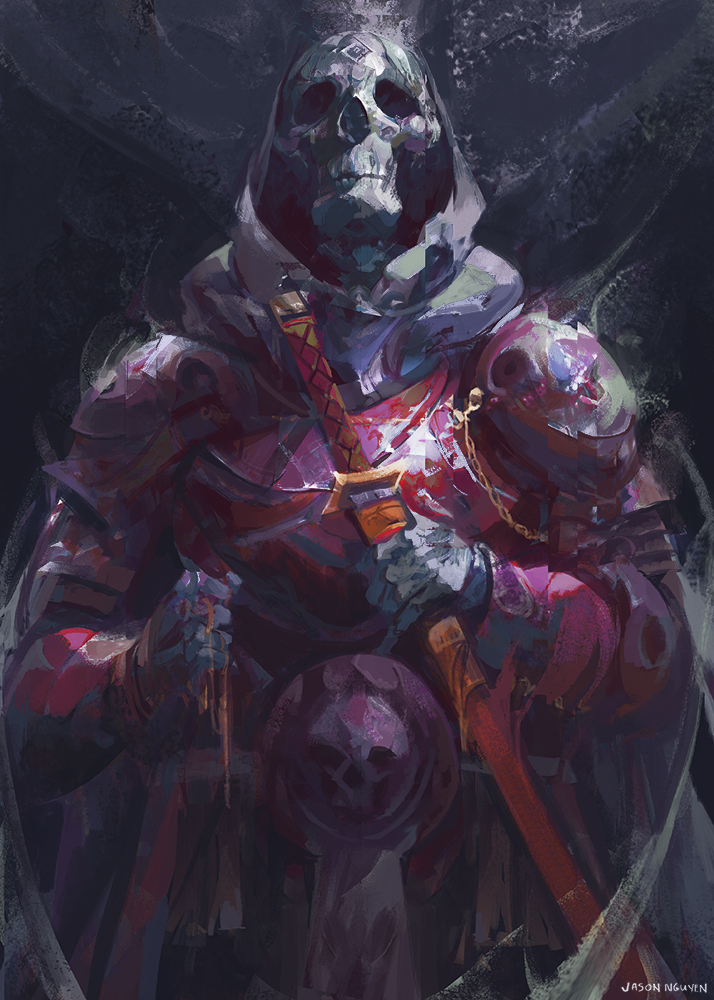


Credits
Art Credits
Work is listed in order of appearance
This class was created by /u/Chicken_Chap
Future updates and new homebrews to come. Thanks for reading, any feeback is greatly appreciated <3